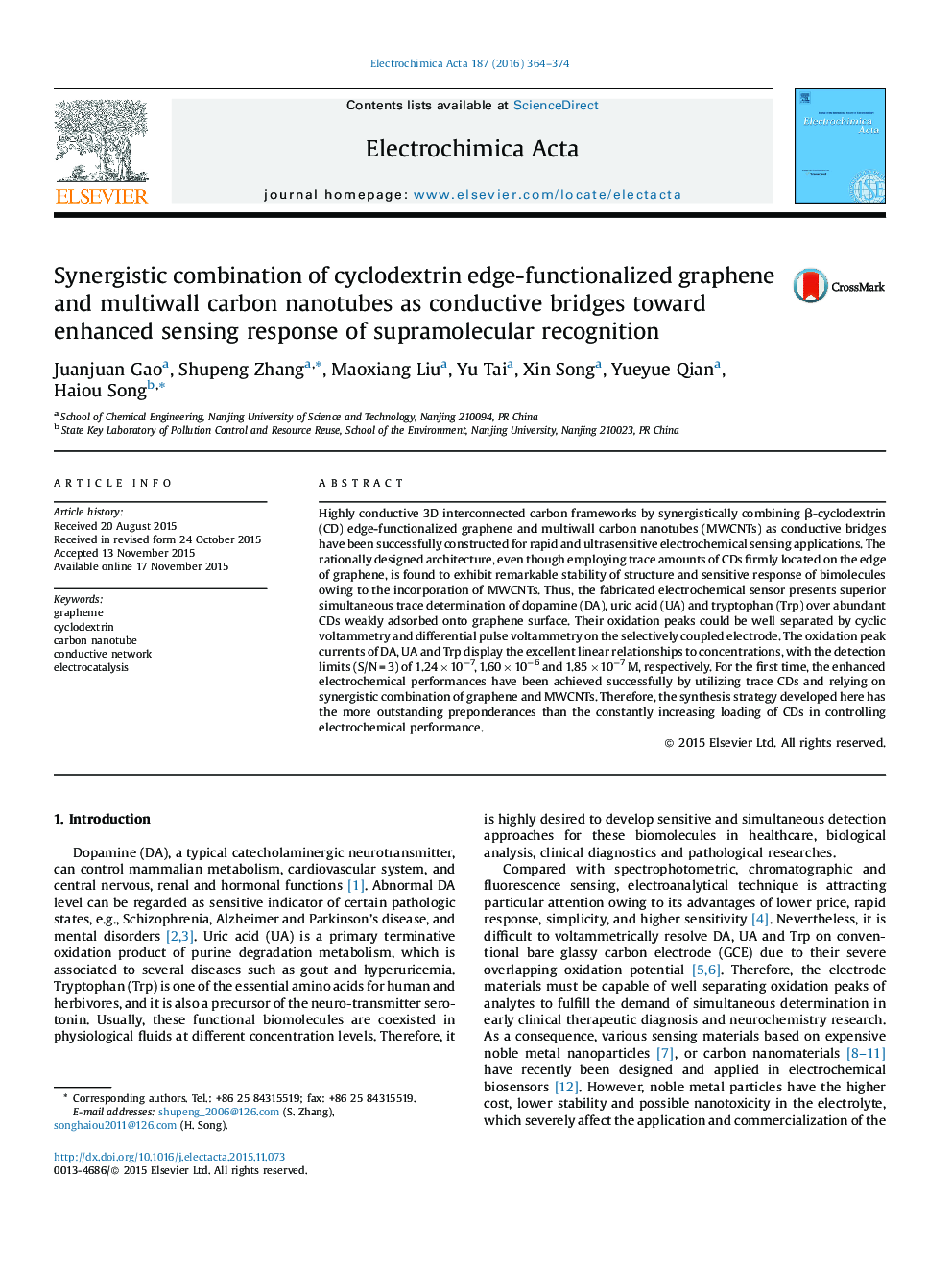| Article ID | Journal | Published Year | Pages | File Type |
|---|---|---|---|---|
| 183280 | Electrochimica Acta | 2016 | 11 Pages |
Highly conductive 3D interconnected carbon frameworks by synergistically combining β-cyclodextrin (CD) edge-functionalized graphene and multiwall carbon nanotubes (MWCNTs) as conductive bridges have been successfully constructed for rapid and ultrasensitive electrochemical sensing applications. The rationally designed architecture, even though employing trace amounts of CDs firmly located on the edge of graphene, is found to exhibit remarkable stability of structure and sensitive response of bimolecules owing to the incorporation of MWCNTs. Thus, the fabricated electrochemical sensor presents superior simultaneous trace determination of dopamine (DA), uric acid (UA) and tryptophan (Trp) over abundant CDs weakly adsorbed onto graphene surface. Their oxidation peaks could be well separated by cyclic voltammetry and differential pulse voltammetry on the selectively coupled electrode. The oxidation peak currents of DA, UA and Trp display the excellent linear relationships to concentrations, with the detection limits (S/N = 3) of 1.24 × 10−7, 1.60 × 10−6 and 1.85 × 10−7 M, respectively. For the first time, the enhanced electrochemical performances have been achieved successfully by utilizing trace CDs and relying on synergistic combination of graphene and MWCNTs. Therefore, the synthesis strategy developed here has the more outstanding preponderances than the constantly increasing loading of CDs in controlling electrochemical performance.
Graphical abstractFigure optionsDownload full-size imageDownload as PowerPoint slide
